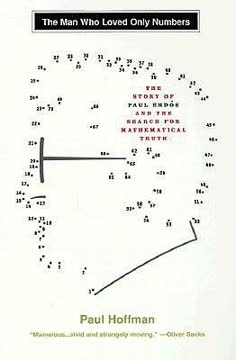Key Takeaways
1. Symmetry: The Universal Language of Nature and Art
"Symmetry is the paramount tool for bridging the gap between science and art, between psychology and mathematics."
Symmetry in nature and art. Symmetry is a pervasive concept that spans disciplines from mathematics to art, biology to physics. In nature, it manifests in the bilateral symmetry of animals, the rotational symmetry of snowflakes, and the translational symmetry of crystal structures. In art, symmetry has been used throughout history to create aesthetically pleasing compositions, from ancient Greek architecture to Renaissance paintings.
Types of symmetry. There are several types of symmetry:
- Reflection symmetry (mirror symmetry)
- Rotational symmetry
- Translational symmetry
- Glide reflection symmetry
Importance in various fields. Symmetry plays a crucial role in:
- Physics: Fundamental laws and particle interactions
- Biology: Development and evolution of organisms
- Psychology: Human perception and aesthetic preferences
- Mathematics: Group theory and abstract algebra
- Art and architecture: Design principles and composition
2. Group Theory: The Mathematical Framework for Symmetry
"Group theory turned out to be the 'official' language of all symmetries."
Definition and properties. Group theory is a branch of mathematics that studies the algebraic structures called groups. A group is a set of elements with an operation that combines any two elements to form a third element, satisfying four key properties:
- Closure
- Associativity
- Identity element
- Inverse element
Applications in symmetry. Group theory provides a powerful framework for describing and analyzing symmetries in various contexts:
- Crystallography: 230 space groups describing crystal structures
- Particle physics: Classification of elementary particles
- Quantum mechanics: Representation of symmetries in physical systems
- Chemistry: Molecular symmetry and spectroscopy
Historical development. The concept of groups emerged from the study of algebraic equations, particularly through the work of Évariste Galois in the early 19th century. It has since become a fundamental tool in mathematics and physics for understanding symmetry and structure.
3. The Unsolvable Equation: From Galois to Modern Physics
"Galois's invention of groups was a stroke of genius."
The quintic equation. For centuries, mathematicians sought a general formula for solving polynomial equations of degree five or higher (quintic equations). This quest led to significant developments in algebra and group theory.
Galois's breakthrough. Évariste Galois, a young French mathematician, proved that no such general formula exists for quintic equations. His work introduced the concept of groups and laid the foundation for modern algebra.
Key contributions:
- Proved the impossibility of solving the general quintic equation by radicals
- Introduced the concept of group theory
- Developed Galois theory, linking group theory to field theory
- Established a connection between symmetry and solvability of equations
Impact on modern physics. Galois's work on group theory and symmetry has had far-reaching consequences in physics:
- Particle physics: Classification of elementary particles
- Quantum mechanics: Symmetry groups in quantum systems
- String theory: Symmetry principles in unified theories
4. Symmetry in Physics: From Einstein to String Theory
"Symmetry has become the source of forces."
Einstein's relativity. Albert Einstein's theories of special and general relativity introduced fundamental symmetries in physics:
- Special relativity: Symmetry between space and time
- General relativity: Symmetry under all coordinate transformations (general covariance)
Quantum mechanics and symmetry. Symmetry principles play a crucial role in quantum mechanics:
- Conservation laws: Linked to symmetries through Noether's theorem
- Particle physics: Classification of particles based on symmetry groups
Standard Model and beyond. The Standard Model of particle physics is built on symmetry principles:
- Gauge symmetries: Describe fundamental forces (electromagnetic, weak, strong)
- Supersymmetry: Proposed symmetry between fermions and bosons
String theory. Symmetry continues to guide the development of unified theories:
- Extra dimensions: Symmetries in higher-dimensional spaces
- Dualities: Symmetries between seemingly different theories
5. The Role of Symmetry in Biological Evolution and Mate Selection
"Symmetry cannot be faked."
Evolutionary significance. Symmetry plays a crucial role in biological evolution:
- Bilateral symmetry: Adaptive advantage in locomotion and perception
- Fluctuating asymmetry: Indicator of developmental stability and genetic quality
Mate selection. Symmetry is an important factor in sexual selection across species:
- Peacock's tail: Example of symmetrical ornament as fitness indicator
- Human facial symmetry: Associated with perceived attractiveness
Fitness indicators. Symmetry serves as a reliable fitness indicator for several reasons:
- Difficult to fake: Reflects genuine developmental stability
- Honest signal: High-cost ornaments indicate genetic quality
- Universal preference: Consistent across cultures and species
Human preferences. Studies have shown that humans prefer symmetrical features in potential mates:
- Facial symmetry: Associated with attractiveness and health
- Body symmetry: Correlated with various fitness indicators
- Odor preferences: Linked to body symmetry in some studies
6. The Human Brain's Innate Preference for Symmetry
"Symmetry is one of the key elements contributing significantly to the 'goodness' of the figure."
Evolutionary psychology. The human preference for symmetry may have evolved for several reasons:
- Predator detection: Bilateral symmetry as a cue for potential threats
- Mate selection: Symmetry as an indicator of genetic quality
- Object recognition: Symmetrical objects easier to identify and remember
Perceptual organization. Gestalt psychology principles highlight the importance of symmetry in visual perception:
- Figure-ground segregation: Symmetrical areas tend to be perceived as figures
- Grouping: Symmetrical elements tend to be grouped together
- "Good figure" principle: Symmetry contributes to perceptual "goodness"
Neurological basis. Brain imaging studies have identified specific regions involved in symmetry perception:
- Occipital lobe: Area activated by symmetrical patterns
- Amygdala: Involved in emotional responses to symmetry
Cultural influences. While symmetry preference appears to be innate, cultural factors can modulate its expression:
- Artistic traditions: Varying emphasis on symmetry across cultures
- Aesthetic ideals: Cultural differences in the appreciation of symmetry
7. Symmetry as a Fundamental Concept: Limitations and Future Directions
"We don't know yet whether symmetry will turn out to be the most fundamental concept in the workings of the universe."
Current status. Symmetry has proven to be an incredibly powerful concept in physics and mathematics:
- Successful predictions: Many symmetry-based theories have been experimentally confirmed
- Unifying principle: Symmetry links diverse phenomena across disciplines
- Mathematical elegance: Group theory provides a rigorous framework for symmetry
Limitations and challenges. There are some potential limitations to the fundamental nature of symmetry:
- Symmetry breaking: Many observed phenomena involve broken symmetries
- Approximate symmetries: Some symmetries in physics are only approximate
- Selection effects: Our preference for symmetry may bias our theories
Future directions. The role of symmetry in fundamental physics remains an active area of research:
- String theory: Searching for underlying principles beyond known symmetries
- Quantum gravity: Reconciling symmetries of general relativity and quantum mechanics
- Emergence: Investigating whether symmetries are fundamental or emergent properties
Philosophical considerations. The status of symmetry raises important philosophical questions:
- Ontology: Is symmetry a property of nature or a human construct?
- Epistemology: How do we know if our symmetry-based theories reflect reality?
- Methodology: Should we prioritize symmetry principles in theory development?
Last updated:
FAQ
1. What is The Equation That Couldn't Be Solved by Mario Livio about?
- Exploration of symmetry: The book investigates the concept of symmetry, its mathematical language, and its influence across art, science, and nature.
- Historical narrative: It traces the quest to solve polynomial equations, focusing on the lives and discoveries of mathematicians like Evariste Galois and Niels Henrik Abel.
- Human side of mathematics: Livio highlights the personal struggles, passions, and tragedies of mathematical geniuses, making abstract concepts relatable.
- Impact on modern science: The narrative connects the development of group theory to foundational advances in physics, biology, and the arts.
2. Why should I read The Equation That Couldn't Be Solved by Mario Livio?
- Interdisciplinary insight: The book reveals how symmetry links diverse fields such as mathematics, art, music, and physics, enriching your understanding of the world.
- Compelling biographies: It humanizes mathematical geniuses, offering inspiring stories of creativity, adversity, and perseverance.
- Accessible mathematics: Livio makes complex ideas like group theory and Galois theory understandable for non-specialists.
- Foundations of modern thought: Readers gain appreciation for the origins of group theory and its profound impact on science and culture.
3. What are the key takeaways from The Equation That Couldn't Be Solved by Mario Livio?
- Symmetry’s universality: Symmetry is a fundamental principle underlying beauty, perception, and the laws of nature.
- Birth of group theory: The quest to solve the quintic equation led to the creation of group theory, revolutionizing mathematics.
- Human element in discovery: The book emphasizes the emotional and social challenges faced by geniuses like Galois and Abel.
- Symmetry’s role in science: Group theory and symmetry are central to modern physics, biology, and even music and art.
4. What is symmetry according to The Equation That Couldn't Be Solved by Mario Livio?
- Ancient and modern definitions: Symmetry originally meant "the same measure" and now refers to "immunity to a possible change," where an object remains unchanged after a transformation.
- Types of symmetry: The book discusses mirror, rotational, translational, glide reflection, and screw symmetries, with examples from nature and art.
- Perception and aesthetics: Symmetry is crucial in how humans perceive beauty and organize visual information, influencing art, music, and even mate selection.
5. How does The Equation That Couldn't Be Solved by Mario Livio explain group theory and its importance?
- Language of symmetry: Group theory is introduced as the mathematical framework for describing and analyzing symmetries.
- Definition and properties: A group is a set with an operation satisfying closure, associativity, identity, and invertibility, allowing for the study of symmetry in various contexts.
- Applications: Group theory explains the structure of algebraic equations, physical laws, and even musical scales, unifying diverse phenomena under a single concept.
- Foundation for modern science: The development of group theory paved the way for advances in physics, chemistry, and other sciences.
6. What is Galois theory, and how does The Equation That Couldn't Be Solved by Mario Livio describe it?
- Linking equations and symmetry: Galois theory connects polynomial equations to groups (Galois groups) that encode the symmetries of their solutions.
- Solvability criterion: The structure of the Galois group determines whether an equation can be solved by radicals, providing a definitive answer to the solvability problem.
- Revolution in algebra: Galois theory shifted the focus from finding formulas to understanding the underlying symmetry, marking the birth of abstract algebra.
- Impact on mathematics: This theory is now central to algebra and has influenced many other fields.
7. Who were Evariste Galois and Niels Henrik Abel, and why are they important in The Equation That Couldn't Be Solved by Mario Livio?
- Abel’s achievements: Abel proved the general quintic equation cannot be solved by radicals, laying the groundwork for modern algebra despite dying young and in poverty.
- Galois’s contributions: Galois invented group theory and Galois theory, linking the solvability of equations to the symmetry of their solutions.
- Tragic lives: Both mathematicians died young under tragic circumstances, with their work initially ignored or misunderstood.
- Legacy: Their discoveries fundamentally changed mathematics and are central to the book’s narrative.
8. How does The Equation That Couldn't Be Solved by Mario Livio connect symmetry and group theory to the laws of nature?
- Symmetry in physics: The book explains that physical laws are invariant under transformations like translations and rotations, a principle central to modern physics.
- Gauge symmetries: It discusses how gauge symmetries in particle physics give rise to fundamental forces and dictate the existence of force-carrying particles.
- From relativity to quantum theory: The narrative shows how group theory underpins Einstein’s relativity and the standard model of particle physics.
- Unifying principle: Symmetry serves as a unifying concept across the sciences, revealing deep connections between mathematics and the universe.
9. What role does symmetry play in human perception, evolutionary psychology, and aesthetics according to The Equation That Couldn't Be Solved by Mario Livio?
- Perceptual organization: Symmetry helps the brain group elements into coherent figures, aiding in object recognition and background separation.
- Evolutionary cues: Bilateral symmetry is a key visual cue for detecting living beings and is linked to survival and mate selection.
- Aesthetic preference: Humans generally prefer symmetrical patterns, associating them with beauty, health, and genetic fitness.
- Neuroscientific evidence: Brain imaging studies show specialized regions respond to symmetry, highlighting its fundamental role in perception.
10. How does The Equation That Couldn't Be Solved by Mario Livio relate group theory to music and art?
- Musical structure: The twelve semitones in an octave form a group under addition modulo 12, explaining musical intervals and harmony.
- Compositional techniques: Concepts like inversion, retrograde, and transposition in music correspond to group operations, especially in twelve-tone serialism.
- Artistic patterns: Group theory provides a language to describe symmetries in visual art, revealing underlying order and structure.
- Broader implications: The book shows how mathematical ideas shape creative expression across disciplines.
11. What is the significance of the classification of finite simple groups in The Equation That Couldn't Be Solved by Mario Livio?
- Building blocks of groups: Finite simple groups are the "prime numbers" of group theory, from which all finite groups are constructed.
- Sporadic groups and the monster: The book highlights the discovery of 26 exceptional sporadic groups, including the massive "monster" group.
- Mathematical achievement: The classification theorem was a monumental collaborative effort, connecting group theory to other areas of mathematics and physics.
- Legacy: This achievement represents a pinnacle in the understanding of symmetry and mathematical structure.
12. What insights does The Equation That Couldn't Be Solved by Mario Livio provide about creativity, genius, and the minds of mathematicians like Galois and Einstein?
- Creativity beyond intelligence: The book argues that creativity involves traits like tolerance for ambiguity, complexity, and independence, not just high IQ.
- Early achievement: Galois, like many mathematicians, made his greatest contributions at a young age, displaying a complex and sometimes troubled personality.
- Genius and mental health: The narrative explores the link between creativity and mental disorders, noting that many geniuses, including Galois, exhibited such traits.
- Scientific curiosity: Studies of Galois’s and Einstein’s brains reflect the enduring fascination with the origins of genius, though no anatomical "smoking gun" was found.
Review Summary
The Equation That Couldn't Be Solved receives mostly positive reviews for its exploration of symmetry, group theory, and the lives of mathematicians Abel and Galois. Readers appreciate the historical context and accessible explanations of complex mathematical concepts. Some find the book's structure disjointed, with tangential chapters on biology and music. The author's passion for the subject and thorough research are praised, particularly regarding Galois' life. While some reviewers struggle with the mathematical content, many find the book engaging and insightful, offering a unique perspective on the development of algebraic theory.
Similar Books










Download PDF
Download EPUB
.epub digital book format is ideal for reading ebooks on phones, tablets, and e-readers.







